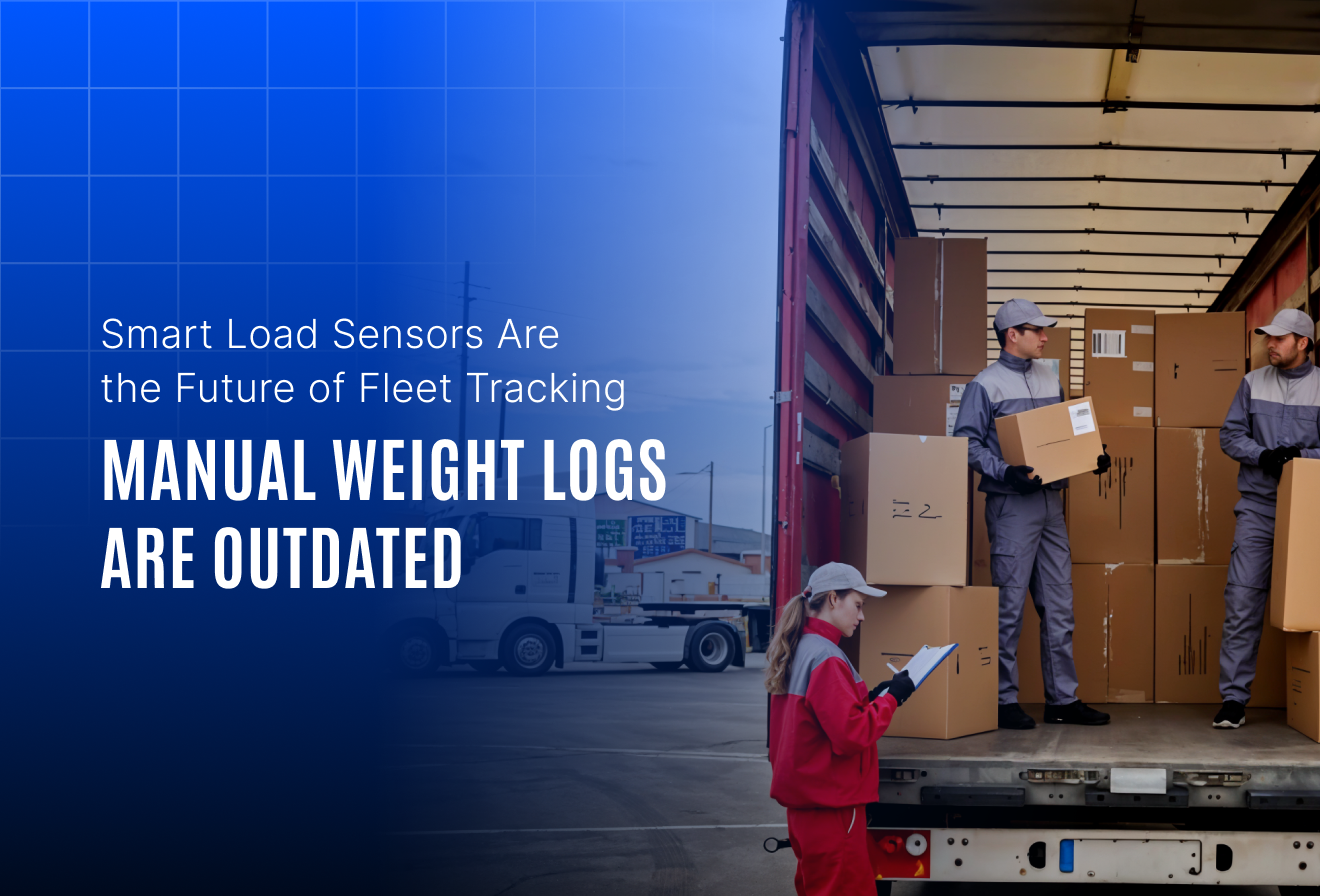Why Load Sensors Are Replacing Manual Weight Logs in Fleet Management

Every trip your vehicle makes carries more than just cargo—it carries the weight of your operations, your costs, and your reputation. But if you’re still depending on manual weight logging or rough estimations, you’re likely carrying another load: inaccuracy.
From overloaded dump trucks in construction to half-empty haulers in logistics, inefficient load tracking leads to higher fuel use, safety risks, wear and tear, and legal fines. It’s not just a small gap in visibility—it’s a costly blind spot.
So what’s the smarter alternative? Load sensors. These small but powerful devices are transforming how fleets monitor, control, and optimize their cargo weight in real-time.
Let’s dive into why load sensors are outpacing outdated manual logs—and how they’re reshaping modern fleet operations.
The problem with manual load logging
Manual methods like handwritten logs, rough estimates, or weighbridge slips might seem convenient. But they’re vulnerable to:
- Human error
- Inconsistent practices across drivers
- No real-time feedback
- Inability to detect overloading on the spot
Even when logs are maintained, by the time they’re reviewed, the vehicle has often already covered the route, possibly overloaded or underutilized.
“We’d only find out about overloading when it was too late—after an accident, a fine, or customer complaint. Manual logs just couldn’t keep up with our pace.”
— Fleet Supervisor, East African Mining Firm
What makes load sensors smarter than manual logs?
Load sensors do more than just measure weight—they help fleet managers see what’s really happening with each vehicle. Installed on axles or suspension systems, these sensors quietly track how much load a vehicle is carrying at every point in the journey.
This data is sent directly to your fleet platform, so managers can:
- Check live load status from their dashboard
- Get alerts if the load is too much (or too little)
- See where and when loading or unloading took place
- Understand patterns using simple graphs and summaries
Instead of waiting for drivers to fill in load logs or report issues, managers get the full picture—as it happens.
Over time, this helps answer important questions like:
- Are vehicles often overloaded before starting a trip?
- Are some trucks underused compared to others?
- Is loading/unloading taking too long at certain sites?
And the best part? You don’t have to read through long reports. The system turns raw data into clear charts and summaries that highlight problems and trends—making it easy to improve efficiency.
For industries like construction or waste management, where loads change frequently, this kind of real-time insight helps make faster, smarter decisions.
Real-world scenario: Manual vs. sensor-based load tracking
Let’s consider a fleet of waste collection trucks operating in a city. Here’s what their daily workflow looks like:
Time to log load
Manual logging: Takes over 10 minutes per trip.
With load sensors: Logged automatically in real time, saving time and effort.
Accuracy
Manual logging: Highly subjective and prone to inconsistencies.
With load sensors: Achieves over 95% precision consistently.
Overloading detection
Manual logging: Detected only after the trip or once a fine is issued.
With load sensors: Alerts are triggered instantly before dispatch.
Billing transparency
Manual logging: Low transparency and potential disputes.
With load sensors: Verifiable, per-trip weight reports available.
Route optimization support
Manual logging: Limited support due to delayed and vague data.
With load sensors: Strong support as it links route planning with live weight data.
Result:
By adopting load sensors, the company cut overload-related fines by 70%, streamlined operational planning, and produced digital weight logs for city compliance officers — reducing both time and legal challenges.
Why fleet managers are switching to load sensors
- Real-Time visibility
Know exactly how much load each vehicle is carrying while it’s on the move—no waiting for reports or estimations. - Better compliance
Prevent overloading fines and meet legal payload limits. This is especially important in industries like mining, construction, and public transport. - Fuel efficiency gains
Overloaded vehicles burn more fuel and strain engines. Load sensors help optimize trips for weight and distance, improving mileage. - Improved safety
Overloaded trucks have longer braking distances and unstable handling. Staying within limits keeps drivers and others safe. - Asset longevity
Excess load puts more pressure on tyres, suspension, and braking systems. Monitoring weight reduces wear and extends vehicle life.
Why system integrators should offer load sensors
- Expand product portfolio
Position your solutions as complete, intelligent fleet platforms with integrated load monitoring. - High ROI for clients
Clients can measure savings through lower fines, fewer breakdowns, and improved planning—making it easier to retain and upsell. - Integration-Friendly
Load sensors work smoothly with existing GPS, fuel, TPMS, and maintenance tools. - Lead the digital shift
Help clients transition from reactive to proactive load management with real-time alerts, automated reports, and predictive insights.
Industry use cases: Where load sensors make a difference
- Construction
Track weight of cement, sand, and gravel on each trip. Prevent illegal overloading that could damage roads and cost fines.
- Waste collection
Ensure bins are collected at the right fill level. Track load per area to plan smarter pickups and avoid unnecessary trips. - Logistics
Optimize vehicle utilization by balancing load across trips. Verify client billing by actual cargo carried. - Mining
Stay within axle weight limits for on-site safety. Comply with state transport regulations effortlessly.
Supporting data & trends
- A report from the World Road Association (PIARC) found that overloaded vehicles increase road wear by up to 60%.
- The Indian Ministry of Road Transport & Highways introduced mandates on axle weight limits, encouraging real-time load tracking.
- Studies show that fleets using load sensors see up to 15% savings in fuel costs due to better trip planning and reduced vehicle stress.
Summary: Smarter loads, smarter operations
Manual load logs once served their purpose, but modern fleet demands call for smarter solutions. Load sensors are no longer a luxury—they’re a necessity. They bring precision, safety, and efficiency to your operations while saving time and money.
Whether you manage city garbage trucks, long-haul trailers, or site dumpers—real-time weight data can change how you run your fleet.



